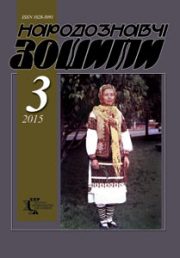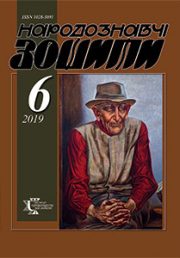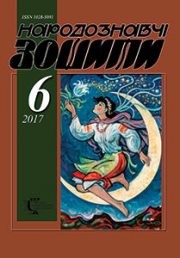Genre Characteristics of Kolomyikas
Оlha Кovalchuk
Genre Characteristics of Kolomyikas and their Functional Nature
The subject of our article became genre nature of kolomiykas in comparative context with Slavic small song genres. Textual approach and criteria for defining kolomiykas are not sufficial when dealing with syncretic masterpieces: there is not enough focus put on the scope and content, as it did V. Hnatiuk [14, p. XIII], size, rhythm and frequent connection with dance — A. Zachynyayev [9, p. 317] or rytm and melody — V. Goshovsky [8, p. 146—210]. As the key differentiators here should serve multiple factors that can not be avoided in determining genre affiliation of songs. These are: a) the form, composition, means of artistic language; b) the content; c) rhythm, melody; d) the presence or absence of dance accompaniment, manner of its presentation, facial expressions and gestures; e) restriction to certain situations (picking up berries, mushrooms, housekeeping, grazing, fun) or absence of such «dedication». So, when fixing folklore material, we tried to avoid subjectivity, using video recording technique, which enabled analyze texts, melodies, dance moves, facial expressions, gestures, emotional state soloists, environment and runtime, music and reception. Thus, penetrating into the essence of the phenomenon, we have come to their own definition of the term «kolomyiky» — as a short two-tree lined of various themes songs to dance or for singing with typically 14 syllabled verse, rhythm (4+4+6) with caesura in the middle, chromatic melody in a small vocal range, final, sometimes the inner feminine rhyme that are prevalently sung in the western regions of Ukraine…






